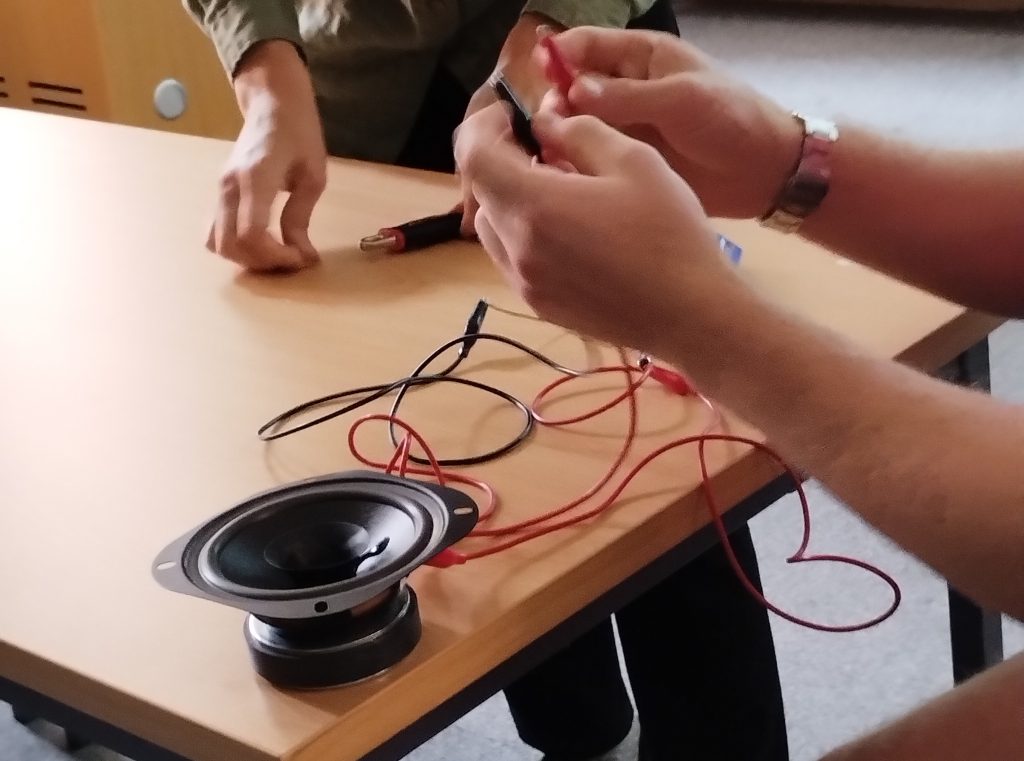Victorian Synthesizer: a term that brings to mind all manner of glowing tubes, Bakelite knobs and brass casing. In reality, nothing quite so visually impressive. The Victorian synthesizer (invented by John Bowers) is quite a simple phenomenon at heart; a battery (or some other DC power source) hooked up to a speaker. Simple.
Now, someone reasonably inclined towards electronics may realize that this simply creates a DC offset; the speaker cone moves in one direction, and stays there, producing nothing more than a ‘click’ as the circuit is connected. And you’d be right. But what if we introduce a conductive object into the signal path?
On its own, this achieves nothing. However, if the connection between this object and the completion of the circuit is physical moved across the surface of the object itself, all of a sudden, we have a rudimentary ‘record player’!

But wait, there’s more. As the synthesizer operates on a principle of repeated connection and disconnection of an electrical circuit, what if that was tied to the physical movement of the speaker itself?

By filling the speaker cone with loose pieces of conducive metal (washers in the above case), and allowing the circuit to flow through them, a sort of feedback loop is created. The actual tone produced is not just dependent on the objects inside the speaker, but also on the speaker itself: its dimensions, responsiveness etc.
One aspect of this I particularly like is how cursed it is; it breaks some fundamental rules of how to treat your speakers, such as DC offset generation, and not putting little bits of metal in your speaker cones. And yet the result is rather tame, yet surprisingly interactive. Some of my classmates had a cracking time with this simple piece of kit. It just goes to show that sometimes the simplest things are the most intuitive, interesting and intractable.
Leave a Reply